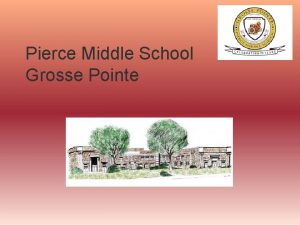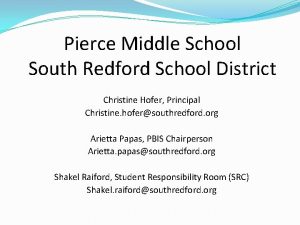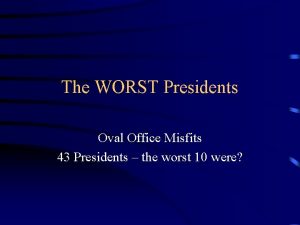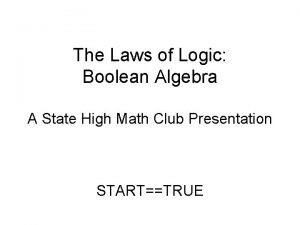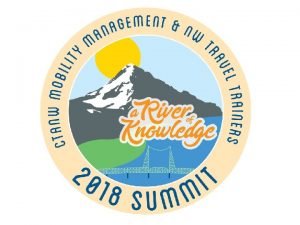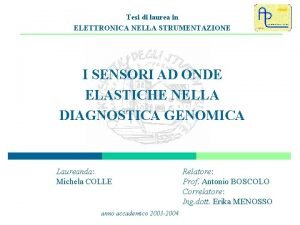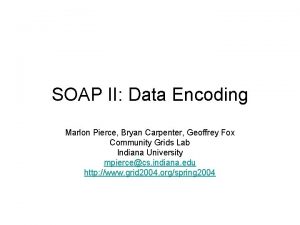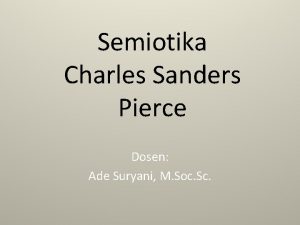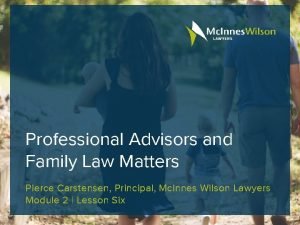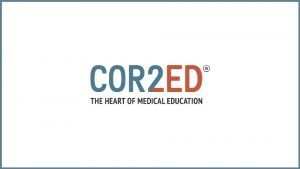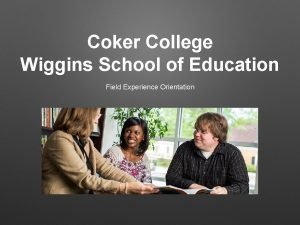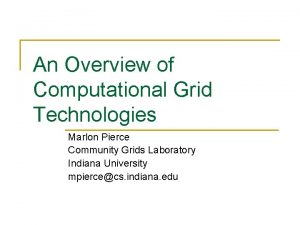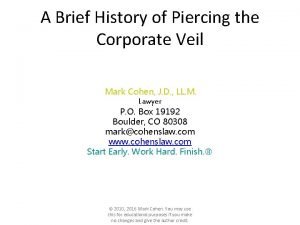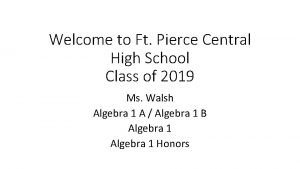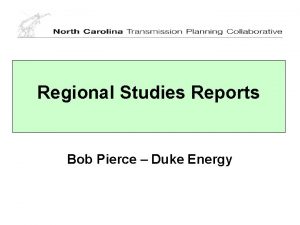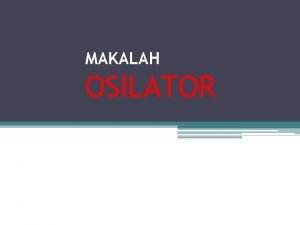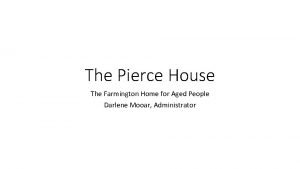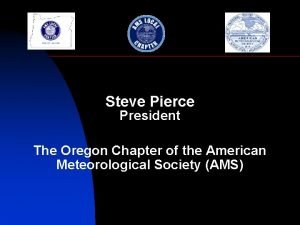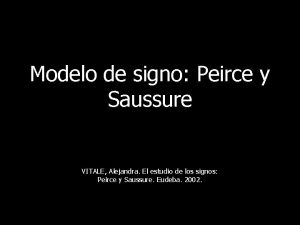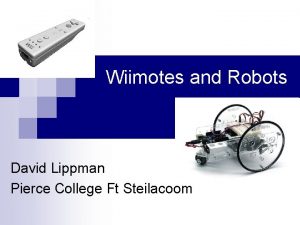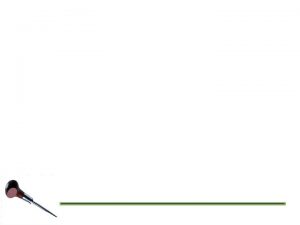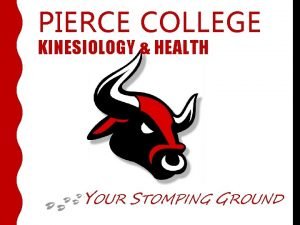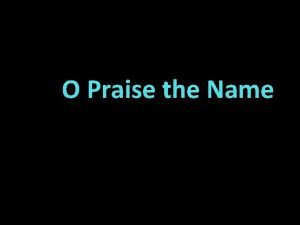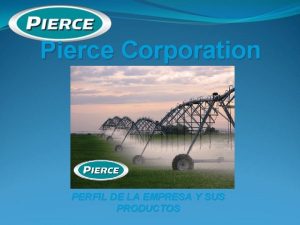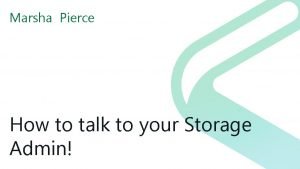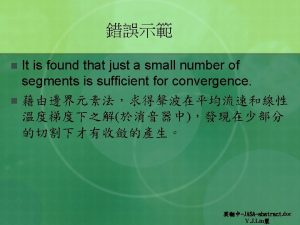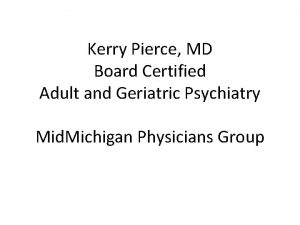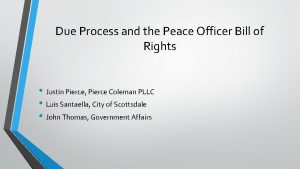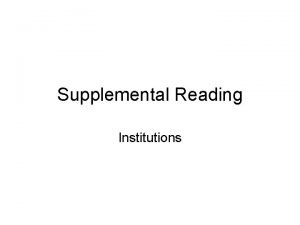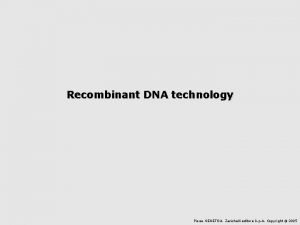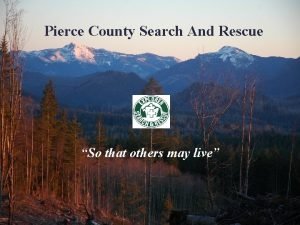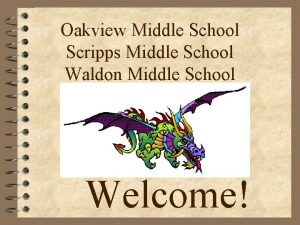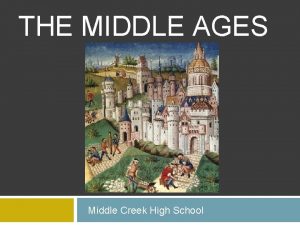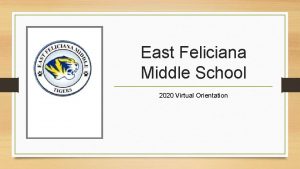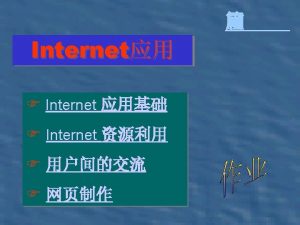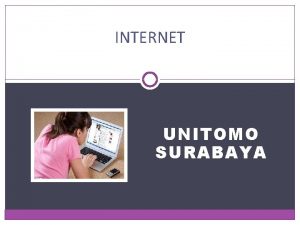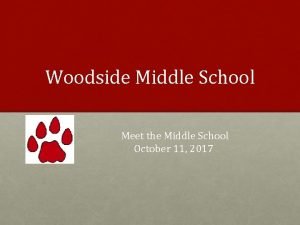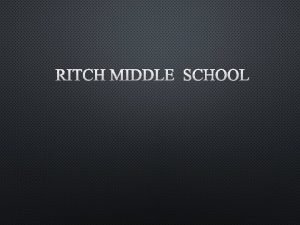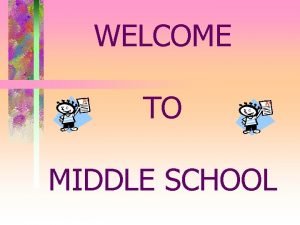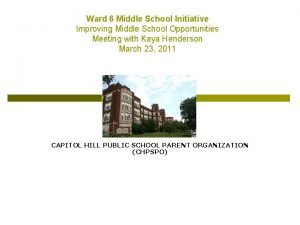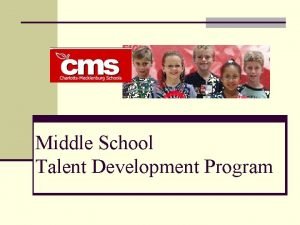slide 1 Internet Orientation Pierce Middle School Directions








































- Slides: 40

slide 1 Internet Orientation Pierce Middle School

Directions slide 2 • As you view this presentation, complete the items on the sheet provided. • If you have any questions, ask me.

slide 3 Internet Guidelines

slide 4 Internet Access Guidelines South Redford School District School Board policy requires that students desiring Internet access at Pierce Middle School must fulfill the following: 1. Completion of a permission form signed by student and parent. (Acceptable Use Policy)

slide 7 Internet Background

What is the Internet? slide 8 • Global network of networks • Enables computers of all kinds to directly and transparently communicate and share services throughout much of the world • World Wide Web = Internet made easy (“point and click”) and accessible with a browser

Internet History slide 9 • 1957 Sputnik prompts start of U. S. Dept. of Defense Advanced Research Projects Agency (ARPA) - to create a communiction system independent from traditional systems like telephone • 1973 ARPA initiates research on techniques and technologies for interlinking networks of various kinds – creation of TCP/IP (Transmission Control Protocol and Internet Protocol)--the backbone of the Internet • 1983 -- There were 500 Internet “hosts” • 1986 National Science Foundation launches NSFnet -- Then there were 5, 000 hosts

Internet History slide 10 • 1989 Tim Berners-Lee invents the Hyper. Text Markup Language (HTML), the programming language with which web pages are now created • 1993 Mosaic, first web browser, released • 1994 3 million Internet users world-wide • 1995 Number of commercial (business) addresses exceeds the number of education addresses • 1996 40 million Internet users world-wide; $1 billion spent in Internet shopping malls

Internet History slide 11 • 1998 100 million Internet users worldwide • It took radio 38 years to reach 50 million listeners • It took TV 13 years to reach 50 million viewers • It took Internet 4 years to reach 100 million users

Internet History slide 12 • 2010 – Estimated nearly 536 million English speaking users world-wide – Estimated over 350 million non. English speaking users world-wide http: //www. Internetworldstats. com/stats 7. htm Source = Internet World Stats

slide 13 Using a Web Browser

Web Browsers • A web browser is a software program designed to give the user easy navigation of the World Wide Web (pointing and clicking). • The two most well-known are Netscape and Internet Explorer. • The South Redford School District uses Internet Explorer. slide 14

Internet Addresses slide 15 < An Internet “address” is also known as a URL or Uniform Resource Locator > For example below is the Internet address (or URL) for Google: http: //www. google. com < Not all URLs contain www (which stands for World Wide Web), for example the South Redford address: http: //southredford. net

slide 16 Internet Domain Names URLs contain domain names which can be used to generally identify the type of website you are accessing: . com means commercial (business). edu means educational (college, university, or educational system) Use the. k 12 means a school domain. org means non-profit organization name to. gov means government help you. net means an Internet Service Provider evaluate ~name indicates a personal Web Page the purpose Foreign countries have domain indicators: and. uk = United Kingdom legitimacy. jp = Japan of a website. . cn = Canada

slide 17 Saving Favorite Websites It is important that you know how to save your favorite Internet websites so that you don’t have to remember or re-type their URLs. In Netscape this process is called bookmarking. In Explorer you add favorites.

slide 20 Searching on the Internet

slide 21 Searching on the Internet • Unlike a library, the Internet does not have one convenient “catalog” to help you find the resources you need. • It is important to remember that no single Internet search mechanism searches the entire Internet. Therefore it is important to use more than one search program. • Search programs on the Internet change daily. You need to familiarize yourself with two or three that you like. • It is also important to familiarize yourself with some techniques that will make your searching more efficient.

slide 22 Searching on the Internet There are three types of search portals on the Internet: Directories Search Engines Meta-Search Engines

slide 23 Directories In a Directory, web sites are organized into categories. The most well-known Internet Directory is. . . In a Directory the sites listed are selected by the creators of the directory. They decide whether to list or not list a site. So Directory search portals are very controlled by their creators. But they don’t necessarily guarantee the authenticity of a site.

slide 24 Educational Directories Some Directories are created by professionals like librarians or other scholars. These Directories provide lists of web sites that have been evaluated for authenticity and educational value. You are encouraged to use this type of Directory when you are working on a school project. Some examples of educational Directories are: The addresses for these sites are on the sheet you were given for this presentation.

Search Engines slide 25 • Search Engines use techniques to “harvest” the Internet and find web sites based on keywords you designate. • Most Search Engines allow the user to choose between a “simple” (or “basic”) search and an “advanced” (or “complex” or “power” search). • Most Search Engines allow you to use certain Search Techniques to refine your search. You are much more likely to get better results if you use Search Techniques. • You need to read the “help” section of a Search Engine to know which techniques it allows. • Some Search Engines (for example, Ask. Jeeves) allow you to use Natural Language searching, that is, the language of normal speech (instead of keywords and search techniques).

Search Engines slide 26 Search Engines don’t guarantee the authenticity of the sites they find. Some well-known Search Engines (you may know of others you prefer): • • • Google Alta. Vista Lycos Info. Seek Hot. Bot • • Excite Northern. Light Ask Jeeves Go The addresses for these sites are on the sheet you were given for this presentation.

slide 27 Meta-Search Engines • Meta-Search Engines are designed to search several Search Engines at once. The number of Search Engines they combine varies. • Most Meta-Search Engines allow you to use Search Techniques. • Sometimes the results from Meta-Search Engines is overwhelming! • Some common Meta-Search Engines: Savvy. Search Dogpile Meta. Crawler Profusion

slide 28 Search Techniques Next are some strategies to use when searching the Internet. Not all techniques may work in a given search program. You need to read the “help” section of the program to see what techniques are available. • Usually it's a good idea to capitalize words that are normally capitalized • Ex. Camas (not camas)

slide 29 Search Techniques • Required & Prohibited Words – + Attaching a + to a word requires the word – - Attaching a - in front of a word prohibits the word – No space is used after the + or • Ex. +basketball +rules • Ex. +greyhound -bus

slide 30 Search Techniques • May use Boolean Logic -– AND, OR, NOT – Usually must CAPITALIZE the connectors – OR statements must be enclosed in parentheses • Ex. fruit AND (grape OR apple)

Search Techniques slide 31 • Phrase Matching (“ “) – Putting quotation marks around a set of words finds results that match the words in that exact order. • Ex. “death penalty” • Wildcard Matching or Truncation or Stemming – Attaching a * to the beginning letters of a keyword returns results with any forms of the term • Ex. environment* (results will contain environment, environments, environmentally, environmentalist)

Search Techniques slide 32 • Document Search Restrictions – Attaching t: to the front of a search term will restrict search to document titles only • Ex. t: cloning (will find only document titles with that keyword) – Attaching u: to the front of a search term will restrict search to document URLs only • Ex. u: microsoft (will locate only URLs with that keyword)

Search Techniques slide 33 • Document Search Restrictions – Attaching link: to the front of a URL will allow you to see what sites link TO that site (this can be useful if you are trying to determine the legitimacy of a site or the politics of a site). • Ex. link: http: //www. camas. wednet. edu/ (to see what sites link to the Camas School District site)

slide 34 Applying Search Techniques • On the sheet you were given for this presentation find the section titled “Applying Search Techniques”. Follow the directions. • When you have completed that section, return to this presentation. • Click here to open the Google search help page to find the answers.

Evaluating Web Sites slide 35

Some Considerations. . . slide 36 • The first web sites were designed and monitored by college professors and students. • Now, as you know, sites range from academic sites to advertisement to cyberporn. It’s easy for anyone to create and post a website. • Books, newspapers, & magazines undergo an editorial process to ensure their accuracy. No one edits Internet sites.

Some Considerations. . . slide 37 • Misinformation, unsupported information, and untruths can and do get published on the Web. • The Web is disorganized! Sites appear and disappear daily. • There are inconsistencies in Search Engines. • Search Engines return an overwhelming number of results. • Searching can be very time-consuming.

What To Do. . . slide 38 • Use sites you know have quality information. – Bibliographic sites like Pro. Quest, SIRS, ELibrary, Issues & Controversies – Sites recommended by your teacher or librarian – Professional Directories like Internet Public Library or Homework Central • Evaluate Web sources carefully. • Verify what you find with another reliable source (often this will be a print resource).

Evaluating Internet Sites slide 39 An Internet site can be evaluated on the basis of its Design (how it looks) and its Content (what it says).

Evaluating Internet Sites-Design Criteria • Does the page connect and load quickly? • Can you see from the first page how the site is organized? • Are the pages of the site clear and readable? • Are links easy to identify? • Are links logically grouped? • Are links relevant to the subject? slide 40 • Is the layout of the site consistent from page to page? • Is there a link back to the home page on each supporting page? • Do icons clearly represent what is intended? • Do sound, graphics, or video enhance the site’s message? • Does the page have its own search engine for searching within the page?

Evaluating Internet Sites-Content Criteria slide 41 • Is the purpose of the page obvious? • What does the domain name tell you? • Is the intended audience clear? • Is the site fact or opinion? • Does the site show any bias or stereotypes? • Are the authors clearly identified? • Are the authors authorities? • Is there a way to contact the authors? • Does the page use correct spelling and grammar?

Evaluating Internet Sites-Content Criteria slide 42 • Is there a date of last revision? Is it recent? • Will the information be useful (relevant) to what your project or need? • Is this information available in any other format elsewhere in the library? • Is the information thorough? • Is the information accurate? • Is the information appropriate to your reading, intellectual, or maturity level?

slide 43 Copyright Cite the Site you Sight! • If you use any information from an Internet site (text, graphics, sound, etc. ) in a project, you must cite it just as you would any other sources.

Finishing Up. . . slide 45 Congratulations! You’re done. Turn in your papers to the bin.
 Pierce middle school grosse pointe
Pierce middle school grosse pointe South redford student connect
South redford student connect Heel and toe step
Heel and toe step Ethnocentric polycentric geocentric
Ethnocentric polycentric geocentric Slide orientation hindi
Slide orientation hindi Franklin pierce accomplishments
Franklin pierce accomplishments Pierce arrow logic
Pierce arrow logic Pierce transit logo
Pierce transit logo Oscillatore di pierce
Oscillatore di pierce Marlon pierce
Marlon pierce Segitiga semiotika pierce
Segitiga semiotika pierce Anne marie pierce
Anne marie pierce Pierce carstensen
Pierce carstensen Pierce chow
Pierce chow Egun rail gun
Egun rail gun Shay pierce
Shay pierce Marlon pierce
Marlon pierce Pierce the corporate veil
Pierce the corporate veil Ft pierce central
Ft pierce central Serial killer pierce
Serial killer pierce Pierce energy planning
Pierce energy planning Osilator pergeseran fasa
Osilator pergeseran fasa Marlon pierce
Marlon pierce Pierce house farmington maine
Pierce house farmington maine Steve pierce weather
Steve pierce weather Pierce
Pierce Objeto inmediato y dinamico
Objeto inmediato y dinamico Pierce chuang
Pierce chuang Generator pierce'a
Generator pierce'a Pierce college ft steilacoom
Pierce college ft steilacoom Exodus 21:16
Exodus 21:16 Pierce college kinesiology
Pierce college kinesiology Praise the lord cast
Praise the lord cast Pierce corporation
Pierce corporation Marsha pierce
Marsha pierce Poe pierce
Poe pierce Kerry pierce
Kerry pierce Pierce coleman pllc
Pierce coleman pllc Water drops pierce stone
Water drops pierce stone Genetica pierce zanichelli
Genetica pierce zanichelli Pierce county search and rescue
Pierce county search and rescue
